Numerical Simulation of Non-Equilibrium Two-Phase Wet Steam Flow through an Asymmetric Nozzle
Abstract
:1. Introduction
2. Computational Methodologies
2.1. Governing Equations
2.2. Phase Change Model
2.3. Equation of State
2.4. Turbulence Model
2.5. Numerical Methods
2.6. Computational Conditions
3. Results and Discussion
3.1. Computational Fluid Dynamics (CFD) Code Validation
3.2. Wet Steam Flow in the Asymmetric Nozzle
4. Conclusions
Author Contributions
Conflicts of Interest
References
- Gyarmathy, G. Condensation in flowing steam. In A von Karman Institute Book on Two-Phase Steam Flow in Turbines and Separators; Moore, M.J., Sieverding, C.H., Eds.; Hemisphere: London, UK, 1976; pp. 127–189. [Google Scholar]
- Young, J.B. The spontaneous condensation of steam in supersonic nozzles. Phys. Chem. Hydrodyn. 1982, 3, 57–82. [Google Scholar]
- Bakhtar, F.; Zidi, K. Nucleation phenomena in flowing high-pressure steam, part 2: Theoretical analysis. Proc. Inst. Mech. Eng. 1990, 204, 233–242. [Google Scholar] [CrossRef]
- White, A.J.; Young, J.B. Time-marching method for the prediction of two-dimensional, unsteady flows of condensing steam. J. Propuls. Power 1993, 9, 579–587. [Google Scholar] [CrossRef]
- Kermani, M.J.; Gerber, A.G. A general formula for the evaluation of thermodynamic and aerodynamic losses in nucleating steam flow. Int. J. Heat Mass Trans. 2003, 46, 3265–3278. [Google Scholar] [CrossRef]
- Yang, Y.; Shen, S. Numerical simulation on non-equilibrium spontaneous condensation in supersonic steam flow. Int. J. Heat Mass Trans. 2009, 32, 902–907. [Google Scholar]
- Yousif, A.H.; Al-Debagh, A.M.; Al-Zuhairy, R.C. Non-equilibrium spontaneous condensation in transonic steam flow. Int. J. Therm. Sci. 2013, 64, 32–42. [Google Scholar] [CrossRef]
- Dykas, S.; Majkut, M.; Strozik, M.; Smolka, K. Losses estimation in transonic wet steam flow through linear blade cascade. Int. J. Therm. Sci. 2015, 24, 109–116. [Google Scholar] [CrossRef]
- Gyarmathy, G.; Lesch, F. Fog droplet observation in Laval nozzles and in an experimental turbine. Proc. Inst. Mech. Eng. 1969, 184, 29–36. [Google Scholar]
- Bakhtar, F.; Zidi, K. Nucleation phenomena in flowing high-pressure steam, part 1: Experimental results. Proc. Inst. Mech. Eng. 1989, 203, 195–200. [Google Scholar] [CrossRef]
- White, A.J.; Young, J.B.; Walters, P.T. Experimental validation of condensing flow theory for a stationary cascade of steam turbine blades. Philos. Trans. R. Soc. A 1996, 354, 59–88. [Google Scholar] [CrossRef]
- Moses, C.A.; Stein, G.D. On the growth of steam droplets formed in a Laval nozzle using both static pressure and light scattering measurements. J. Fluids Eng. 1978, 100, 311–322. [Google Scholar] [CrossRef]
- Zudov, V.; Lokotko, A. Numerical and experimental investigation of two-dimensional asymmetric nozzles. In Proceedings of the 3rd European Symposium of Aerothermodynamics for Space Vehicles, Noordwijk, The Netherlands, 24–26 November 1998. [Google Scholar]
- Weiss, J.M.; Smith, W.A. Preconditioning applied to variable and constant density flows. AIAA J. 1995, 33, 2050–2057. [Google Scholar] [CrossRef]
- Ishazaki, K.; Ikohagi, T.; Daiguji, H. A High-Resolution Numerical Method for Transonic Non-equilibrium Condensation Flows through a Steam Turbine Cascade. In Proceedings of the 6th International Symposium on Computational Fluid Dynamics, Lake Tahoe, CA, USA, 4–8 September 1995; Volume 1, pp. 479–484. [Google Scholar]
- Young, J.B. Two-dimensional, nonequilibrium, wet-steam calculations for nozzles and turbine cascades. J. Turbomach. 1992, 114, 569–579. [Google Scholar] [CrossRef]
- Young, J.B. An equation of state for steam for turbomachinery and other flow calculations. J. Eng. Gas Turbines Power 1988, 110, 1–7. [Google Scholar] [CrossRef]
- Menter, F.R. Zonal two equation k-ω turbulence models for aerodynamic flows. AIAA Pap. 1993. [Google Scholar] [CrossRef]
- Menter, F.R. Two-equation eddy-viscosity turbulence models for engineering applications. AIAA J. 1994, 32, 269–289. [Google Scholar] [CrossRef]
- Menter, F.R.; Kuntz, M.; Langtry, R. Ten years of industrial experience with the SST turbulence model. In Turbulence, Heat and Mass Transfer; Hanjalic, K., Nagano, Y., Tummers, M., Eds.; Begell House Inc.: Danbury, CT, USA, 2003; Volume 4, pp. 625–632. [Google Scholar]
- ANSYS. Fluent User’s Guide; ANSYS Inc.: Pittsburgh, PA, USA, 2011. [Google Scholar]
- Roe, P.L. Approximate Riemann solvers, parameter vectors, and difference schemes. J. Comp. Phys. 1981, 43, 357–372. [Google Scholar] [CrossRef]
- Van Leer, B. Towards the ultimate conservative difference scheme V: A second order sequel to Godunov’s method. J. Comp. Phys. 1979, 32, 101–136. [Google Scholar] [CrossRef]
- Dykas, S. Numerical calculation of the steam condensing flow. Task Q. 2001, 5, 519–535. [Google Scholar]
- Heiler, M. Instationäre Phänomene in Homogen/Heterogen Kondensierenden Düsen-und Tubinens-Trömungen. Ph.D. Thesis, Fakultät für Maschinenbau, Universität Karlsruhe (TH), Karlsruhe, Germany, 1999. [Google Scholar]
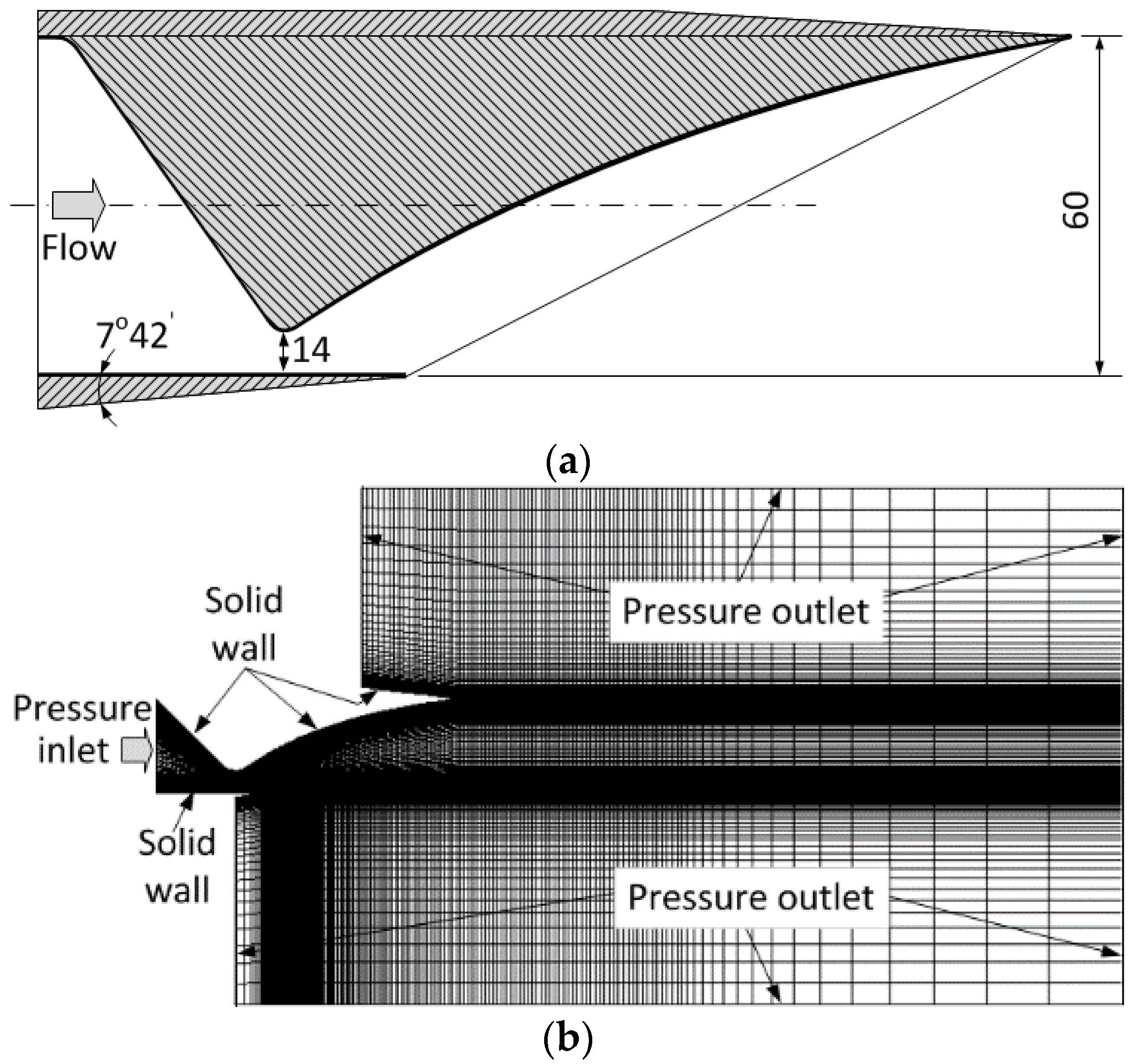
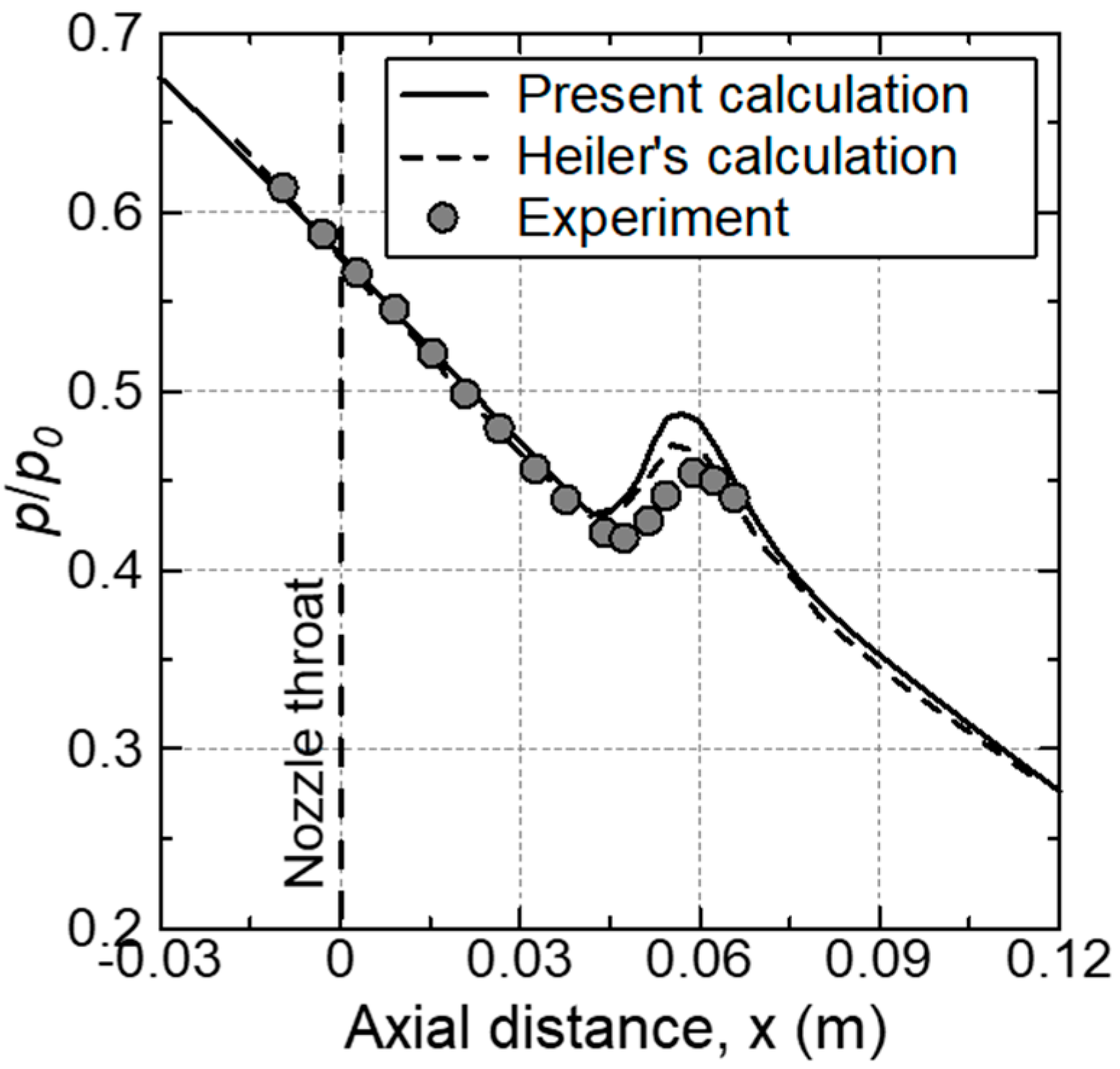
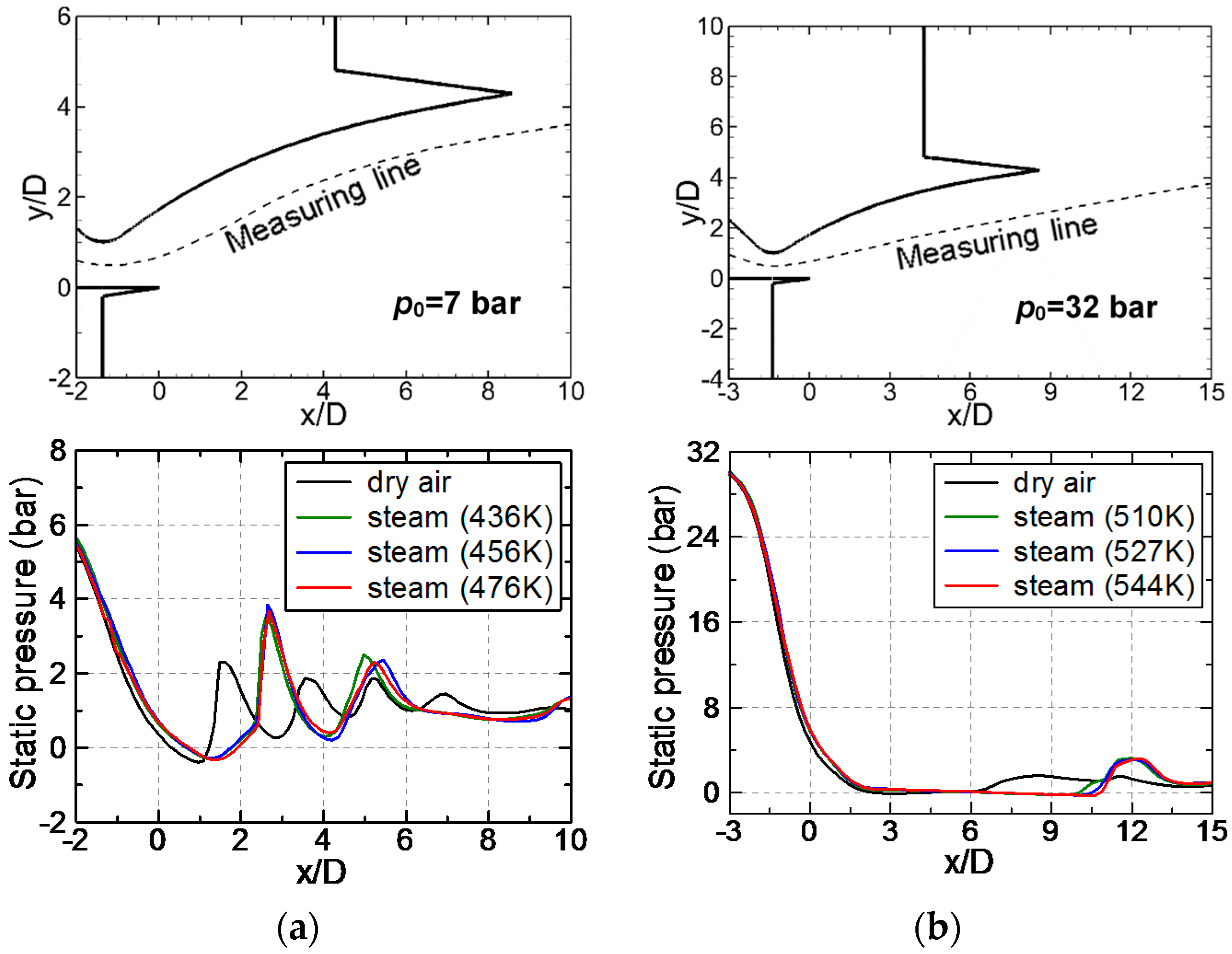
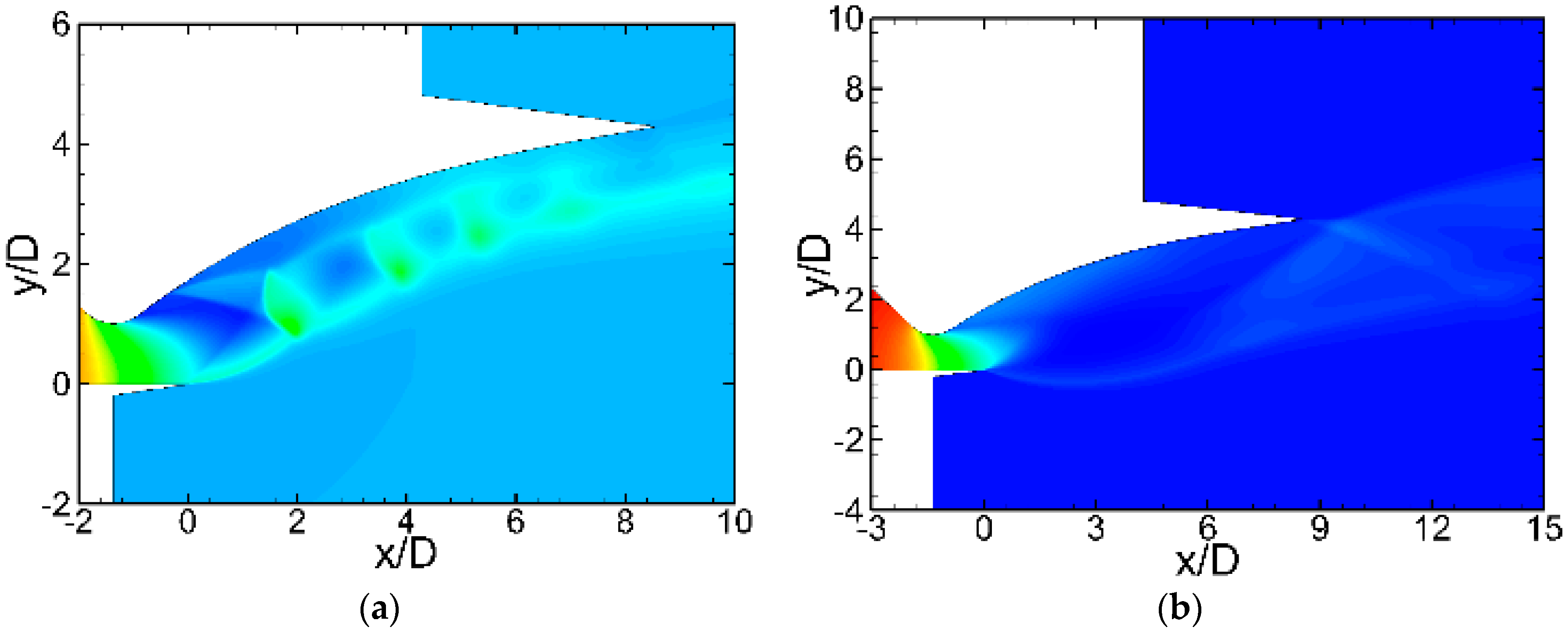
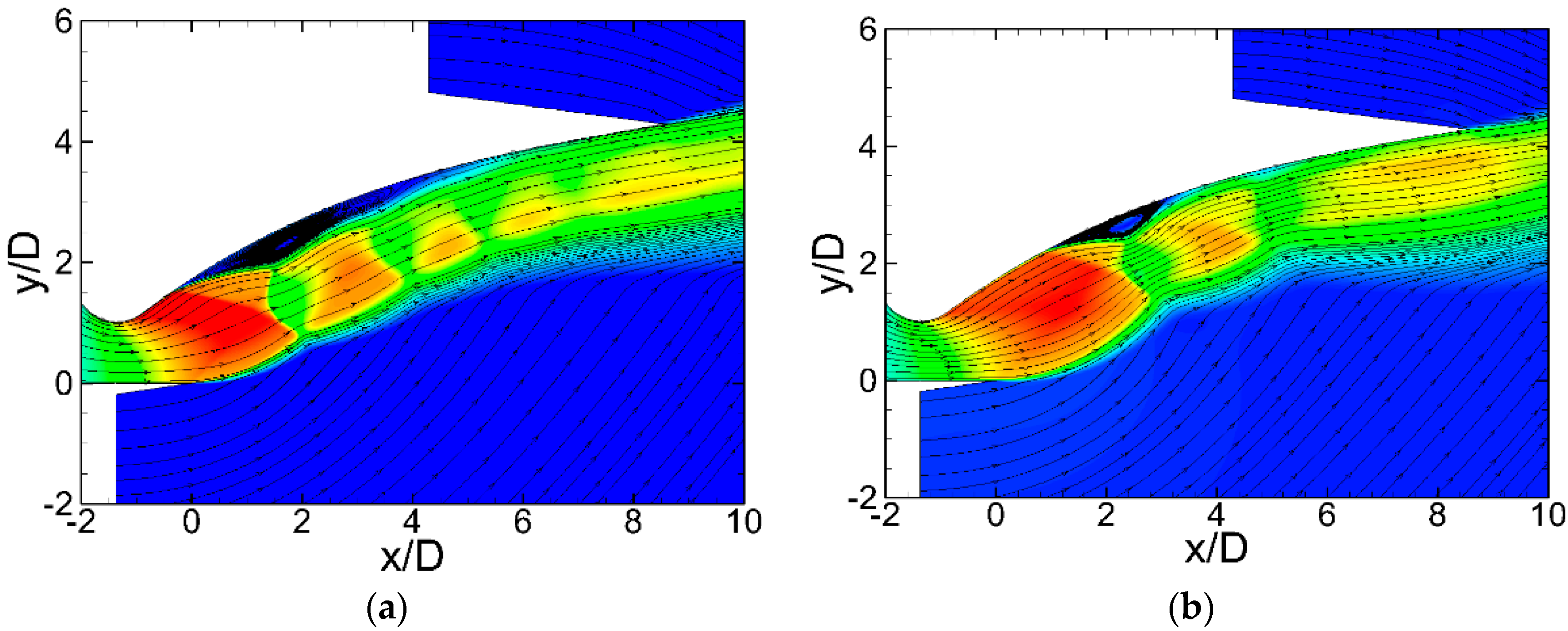
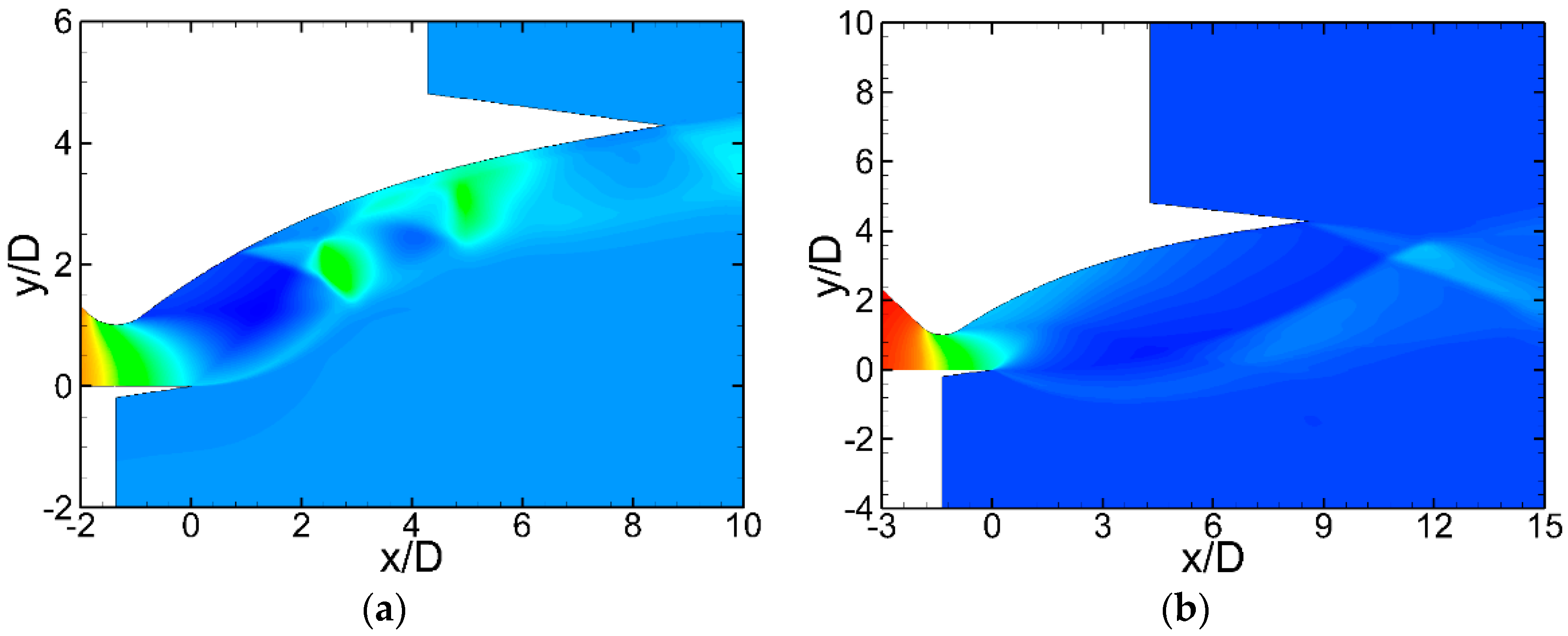

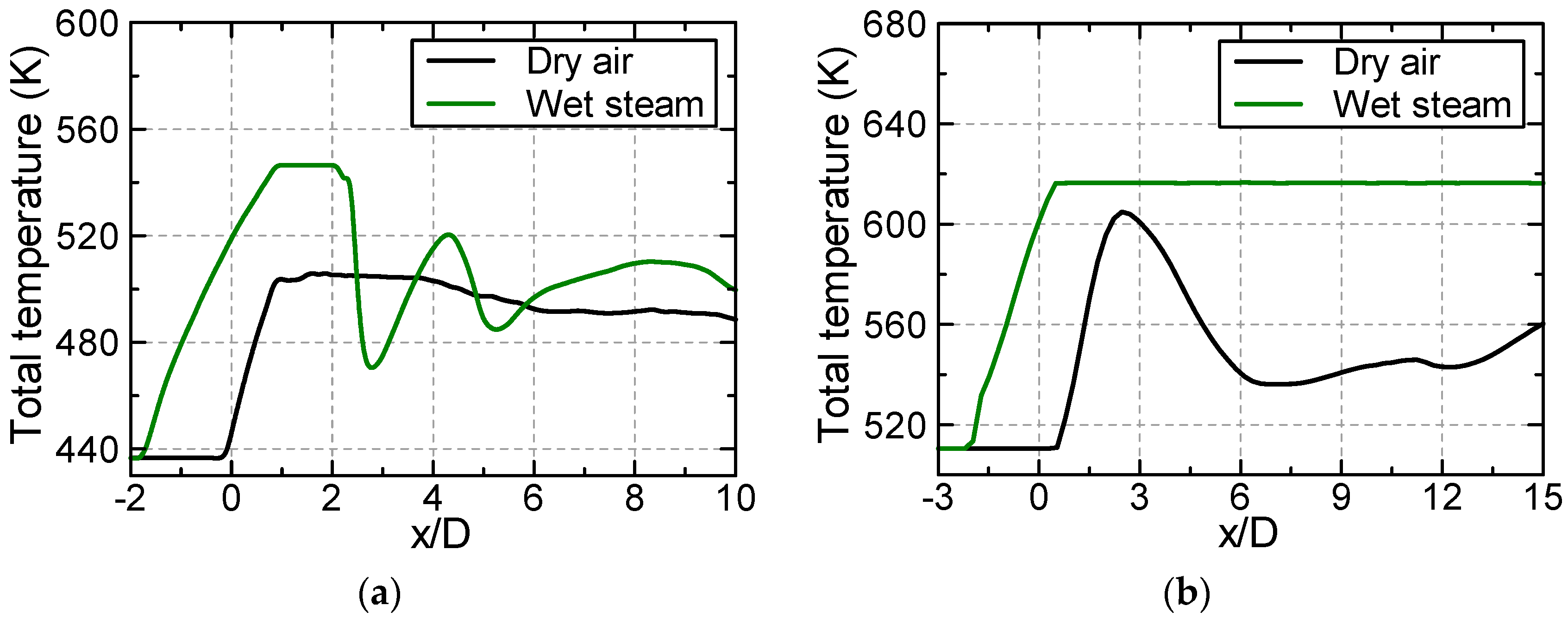
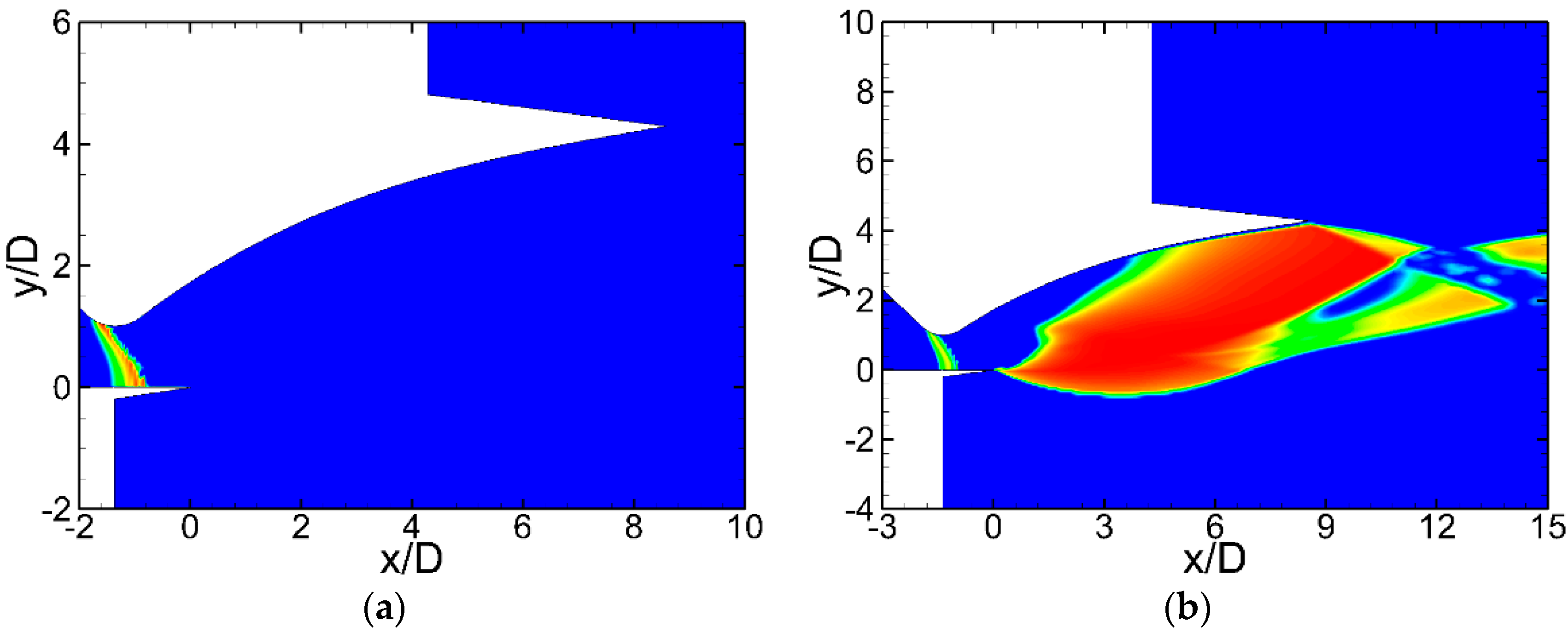
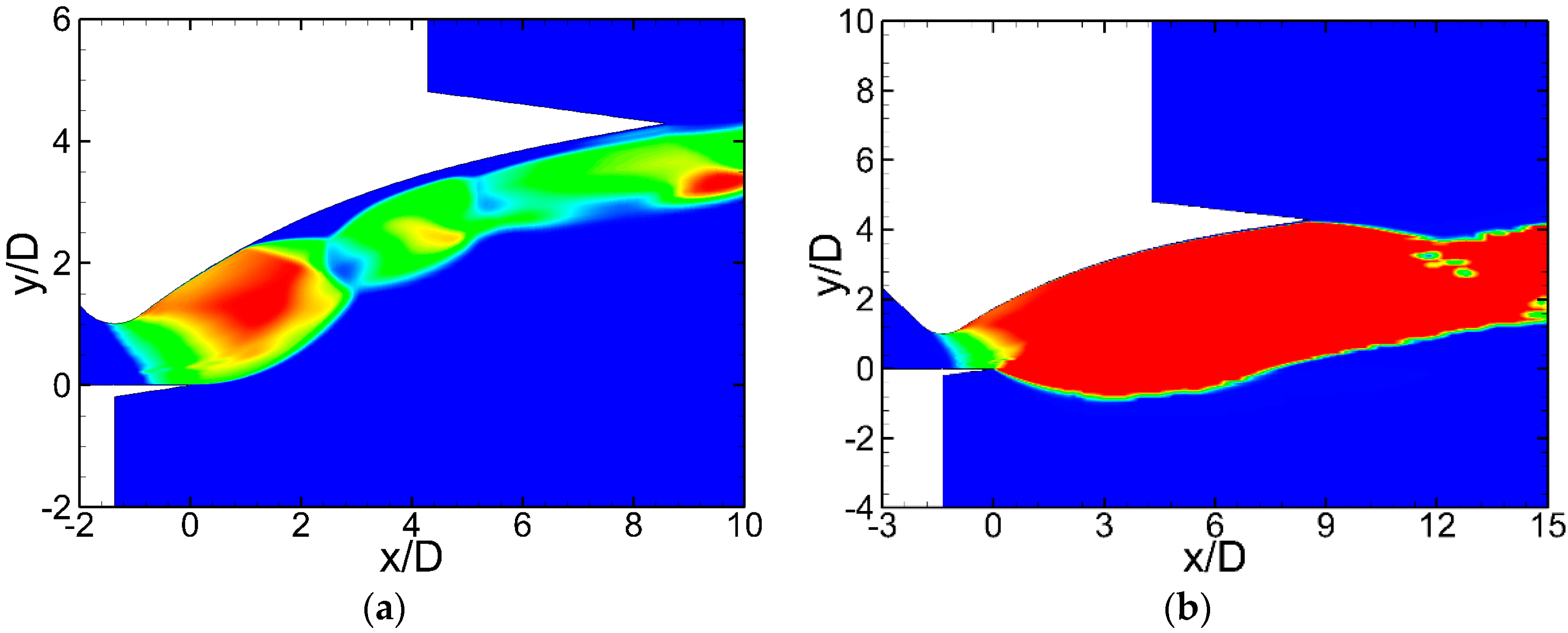
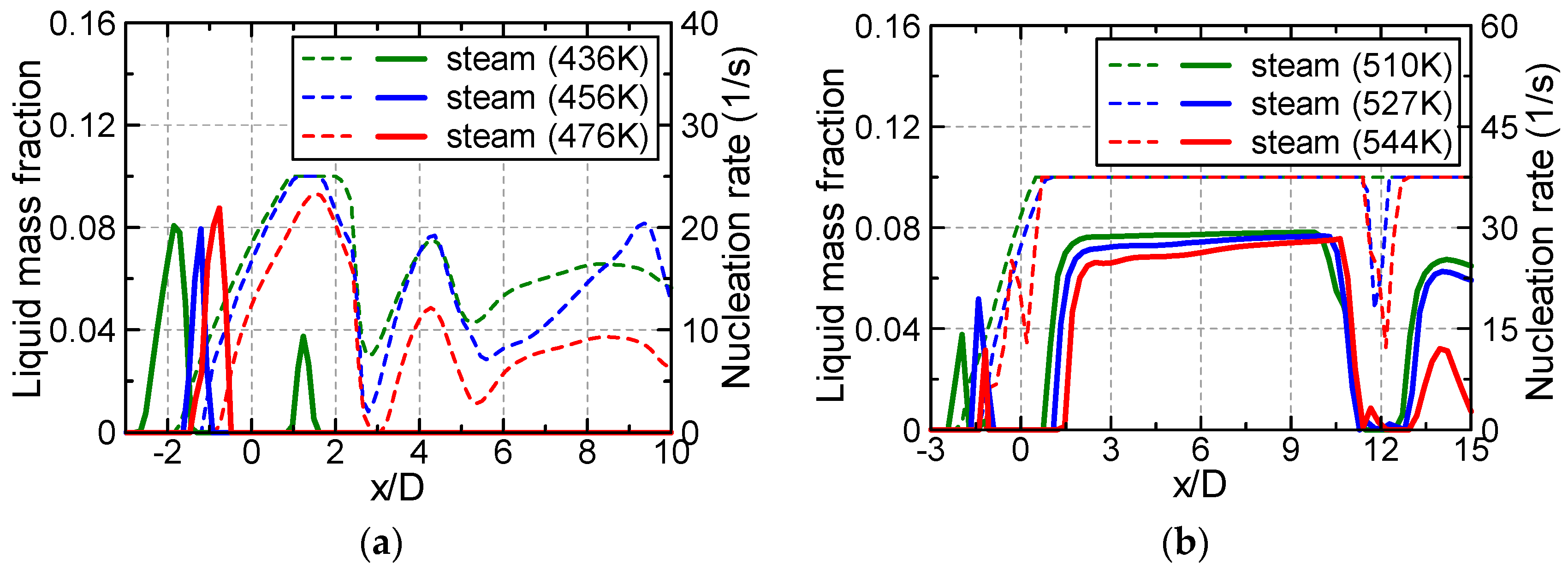
© 2017 by the authors. Licensee MDPI, Basel, Switzerland. This article is an open access article distributed under the terms and conditions of the Creative Commons Attribution (CC BY) license (http://creativecommons.org/licenses/by/4.0/).
Share and Cite
Alam, M.M.A.; Takao, M.; Setoguchi, T. Numerical Simulation of Non-Equilibrium Two-Phase Wet Steam Flow through an Asymmetric Nozzle. Fluids 2017, 2, 63. https://doi.org/10.3390/fluids2040063
Alam MMA, Takao M, Setoguchi T. Numerical Simulation of Non-Equilibrium Two-Phase Wet Steam Flow through an Asymmetric Nozzle. Fluids. 2017; 2(4):63. https://doi.org/10.3390/fluids2040063
Chicago/Turabian StyleAlam, Miah Md Ashraful, Manabu Takao, and Toshiaki Setoguchi. 2017. "Numerical Simulation of Non-Equilibrium Two-Phase Wet Steam Flow through an Asymmetric Nozzle" Fluids 2, no. 4: 63. https://doi.org/10.3390/fluids2040063




